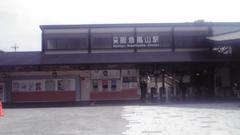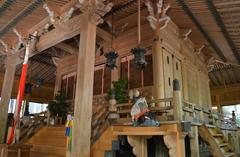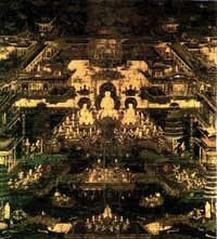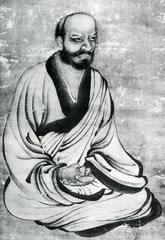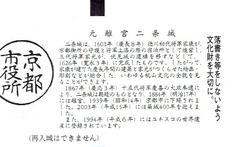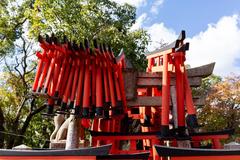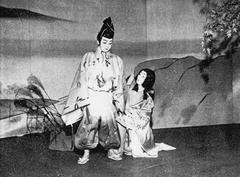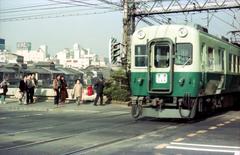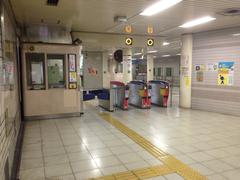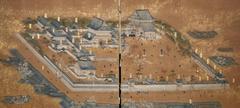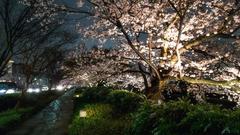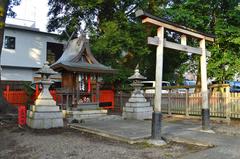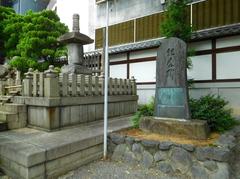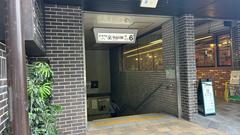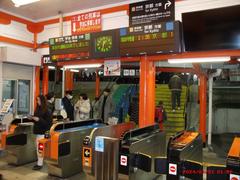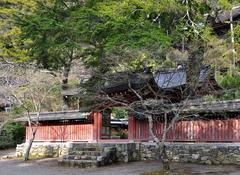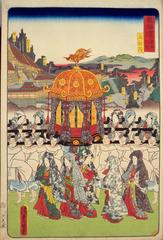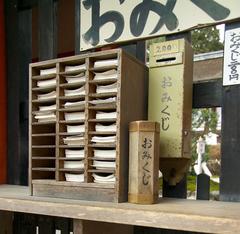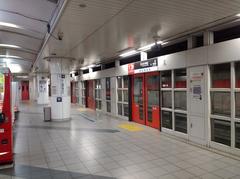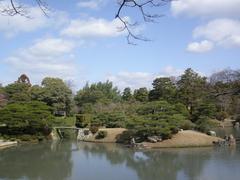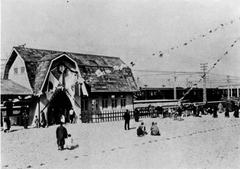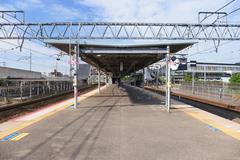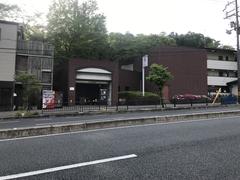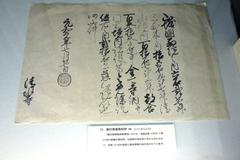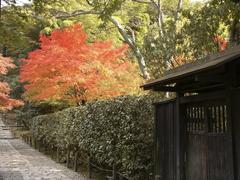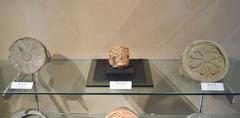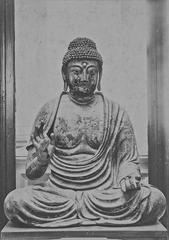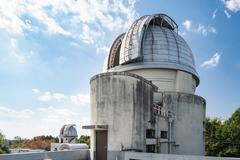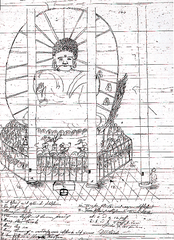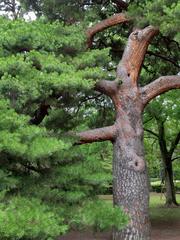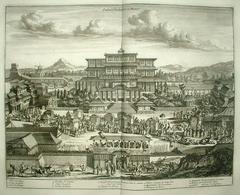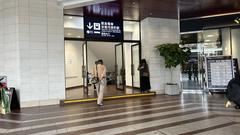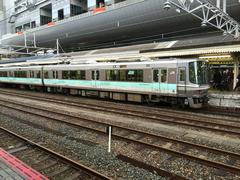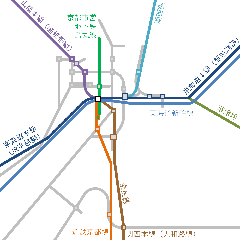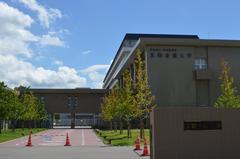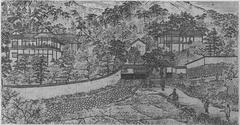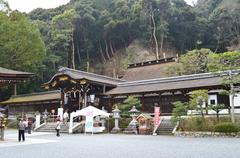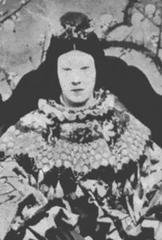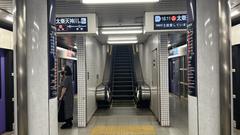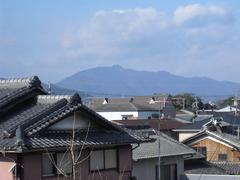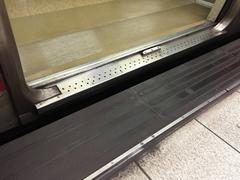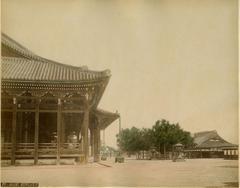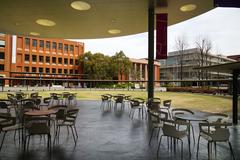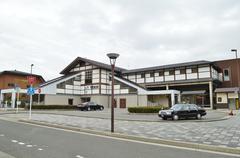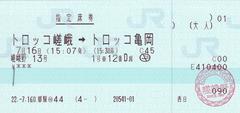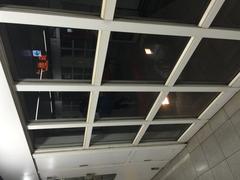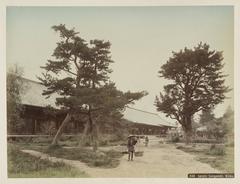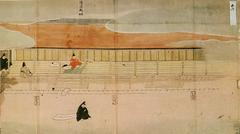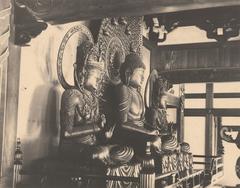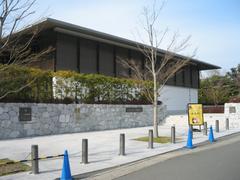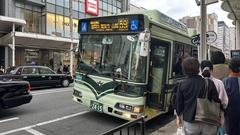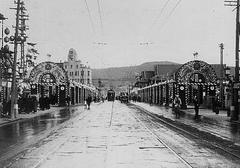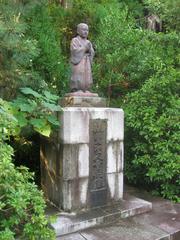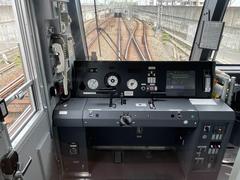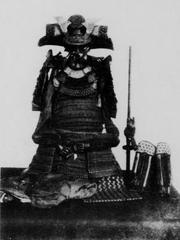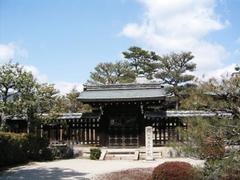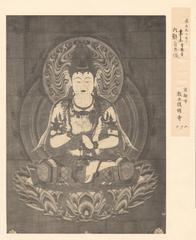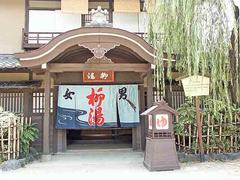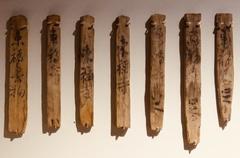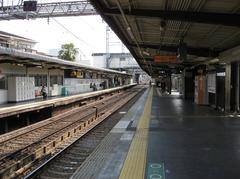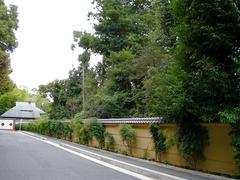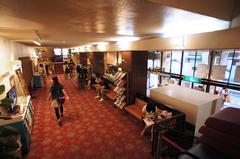Sumizome Station Visiting Hours, Tickets, and Kyoto Historical Sites Guide
Date: 04/07/2025
Introduction
Sumizome Station (墨染駅, Sumizome-eki) is a distinctive gateway to Kyoto’s Fushimi Ward, offering seamless access to centuries-old shrines, tranquil temples, and the renowned Fushimi sake district. Since its founding in 1910, this Keihan Main Line station has played a vital role in connecting visitors to southern Kyoto’s cultural treasures while retaining the unique charm of a local station. This comprehensive guide details everything you need to know about visiting Sumizome Station: from operating hours and ticketing options to accessibility information, travel tips, and highlights of nearby historical sites.
For further reference and up-to-date traveler resources, you may consult official and trusted platforms such as Kyoto History, Magical Trip, and Matcha-JP.
Historical Background
Early Development and Fushimi’s Significance
Sumizome Station opened its doors on November 15, 1910, as part of the Keihan Main Line, connecting Kyoto and Osaka and accelerating the urbanization of southern Kyoto. The Fushimi area is historically notable for its strategic location along the Uji River, pivotal in trade and culture. The region’s long-standing sake brewing tradition and proximity to landmarks like Fushimi Inari Taisha and Fushimi Castle underscore its cultural importance (Kyoto History, EdrawMind, Facts and Details, Unseen Japan).
Architectural Features
Sumizome Station blends traditional wooden architectural elements with modern amenities such as elevators and automatic ticket machines. Preservation efforts are consistent with city regulations that safeguard Kyoto’s unique architectural heritage (Facts and Details).
Visiting Sumizome Station
Operating Hours
Sumizome Station is open daily from approximately 5:00 AM to midnight, in line with Keihan Main Line train services. Note that opening times for nearby attractions and shops may differ, generally ranging from 9:00 AM to 5:00 PM.
Ticket Information
Tickets can be purchased at station vending machines or using IC cards like ICOCA, Suica, or PiTaPa. Fares are distance-based—for instance, a ride to Kyoto Station costs about 220–270 yen. For tourists, day passes and regional passes such as the Kansai Thru Pass are available and offer excellent value (OhFact, Matcha-JP).
Accessibility
Sumizome Station is equipped with:
- Elevators and ramps at both entrances
- Tactile paving for visually impaired travelers
- Accessible restrooms
- Staff assistance during operating hours
Directions and Connectivity
Located directly on the Keihan Main Line (station code KH32), Sumizome Station is easily reached from Kyoto’s central districts or Osaka. Frequent local and sub-express trains stop here. For those transferring from subway lines or buses, nearby stations such as Tambabashi and Fushimi-Inari offer convenient connections (GLTJP).
Exploring Nearby Kyoto Historical Sites
Sumizome Station is an ideal base for visiting a range of historical and cultural attractions:
Within Walking Distance
- Fujinomori Shrine: Famed for the annual Hydrangea Festival (Ajisai Matsuri) in June and early July. Shrine grounds are mostly accessible, though some paths are uneven. (Magical Trip)
- Tofuku-ji Temple: A renowned Zen temple celebrated for its Tsutenkyo Bridge and autumn foliage. Zen gardens designed by Mirei Shigemori showcase modern landscaping. (Magical Trip)
- Sennyu-ji Temple: Known for imperial mausoleums and tranquil gardens, this lesser-visited temple is ideal for quiet reflection. (Walk Around Blog)
By Train or Short Walk
- Fushimi Inari Taisha: One of Japan’s most iconic shrines, famous for thousands of vermilion torii gates. The shrine is open 24/7 and admission is free. (Japan Guide)
- Fushimi Sake District: A short ride takes you to Kyoto’s sake brewing heart. Many breweries offer tours and tastings; the Gekkeikan Okura Sake Museum features English displays. (Magical Trip)
- Kyoto Railway Museum & Kyoto Aquarium: Both are located near Kyoto Station and are accessible by public transportation, offering interactive exhibits and family-friendly experiences. (Walk Around Blog)
- Sanjusangendo Temple, Kyoto Tower, and Higashi Hongan-ji: All are easily reached by train and offer insight into Kyoto’s diverse spiritual and architectural heritage. (Trip101)
Seasonal Events and Experiences
- Fujinomori Hydrangea Festival: Early June to early July; over 3,500 hydrangea bushes in bloom.
- Autumn Foliage at Tofuku-ji: November; spectacular views and extended visiting hours.
- Kyoto Antique Fair & Local Matsuri: Regularly held in the area, featuring traditional performances, markets, and food stalls (CEO Weekly).
Local Cuisine and Practical Experiences
- Sake Brewery Tours: Explore Fushimi’s historic breweries and enjoy tastings of premium sake.
- Traditional Dining: The neighborhood offers izakaya, retro kissaten cafés, and kaiseki restaurants serving Kyoto specialties.
- Cultural Workshops: Nearby temples and community centers offer experiences in tea ceremony, ikebana, and calligraphy (JapaneseWiki).
Practical Travel Tips
- Ticketing: Use IC cards or purchase regional passes for ease and savings.
- Peak Times: Visit early morning or late afternoon to avoid crowds, especially during cherry blossom and autumn foliage seasons.
- Accessibility: Most major sites are wheelchair accessible; check specific venues for details.
- Luggage: No lockers at Sumizome Station; use larger stations like Tambabashi or Kyoto Station.
- Etiquette: Respect local customs at shrines and temples; support local businesses for an authentic experience.
Frequently Asked Questions (FAQ)
Q: What are Sumizome Station’s operating hours?
A: Approximately 5:00 AM to midnight, matching Keihan Main Line schedules.
Q: How do I buy tickets?
A: At station vending machines or with IC cards such as ICOCA and Suica.
Q: Is the station accessible for people with disabilities?
A: Yes, elevators, ramps, and tactile paving are available.
Q: What are the best times to visit nearby sites?
A: Spring for cherry blossoms, autumn for foliage, and early summer for festivals.
Q: Are there guided tours?
A: Many local agencies offer tours that include Sumizome Station and Fushimi’s highlights.
Conclusion and Visitor Recommendations
Sumizome Station is more than a transit point—it’s a welcoming entry to Kyoto’s living heritage. With its strategic location, modern amenities, and close proximity to some of Kyoto’s most celebrated cultural sites, it’s the perfect starting point for a journey through history, tradition, and local flavor. Enhance your visit by using regional passes, engaging in cultural experiences, and respecting the rhythms of local life.
For real-time updates, personalized itineraries, and travel tips, download the Audiala app or visit official tourism websites.
Useful Contacts and External Links
- Keihan Railway Customer Service: +81-6-6945-4560
- Keihan Railway Official Site
- Kyoto Tourist Information Center
- Kyoto History
- Magical Trip
- Matcha-JP
- EdrawMind
- Facts and Details
- Unseen Japan
- OhFact
- JapaneseWiki
- TravelPander
- CEO Weekly
- TravelCaffeine
- GLTJP
- TheThoroughTripper
- Walk Around Blog
- Japan Guide
- Trip101

